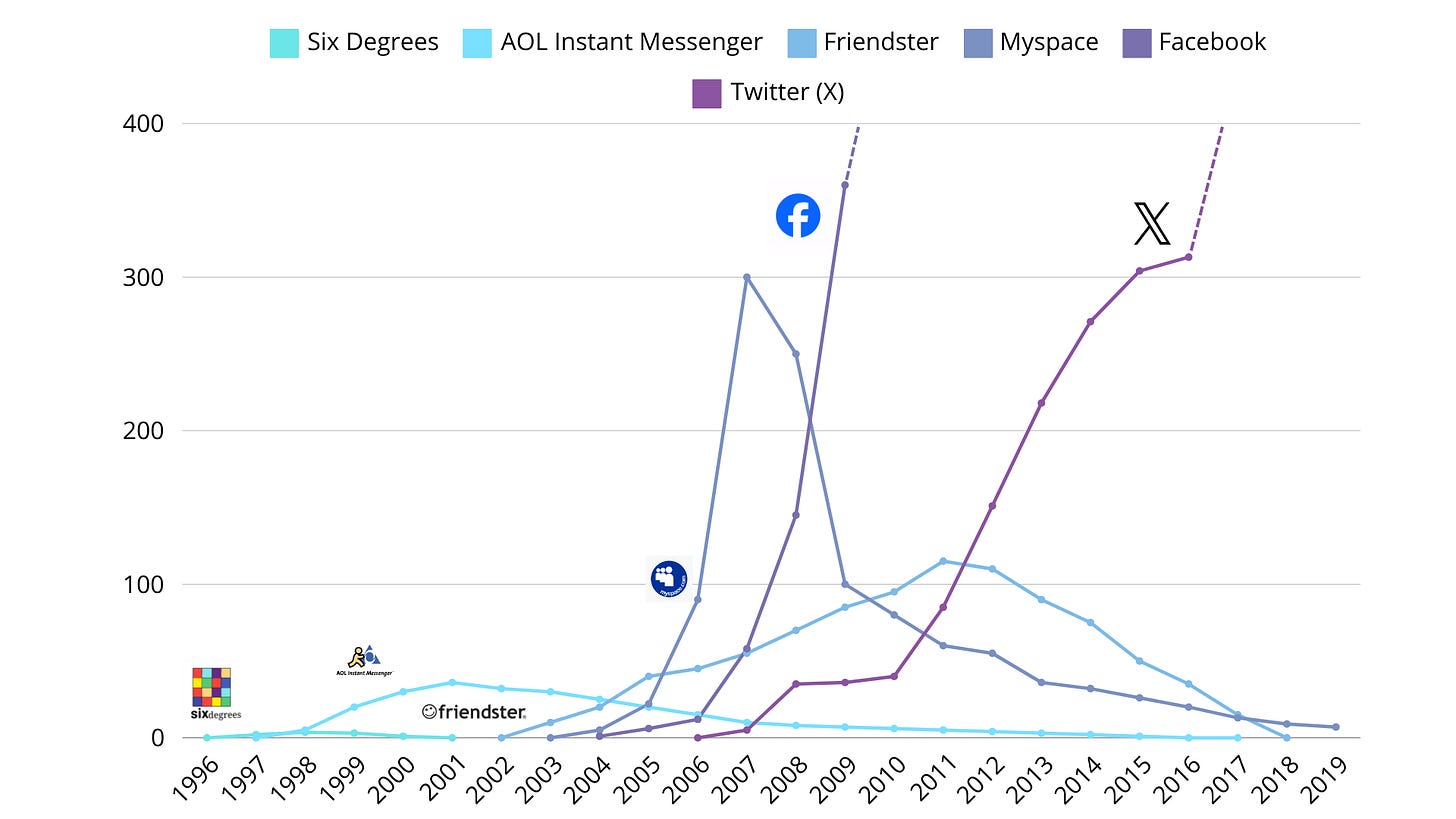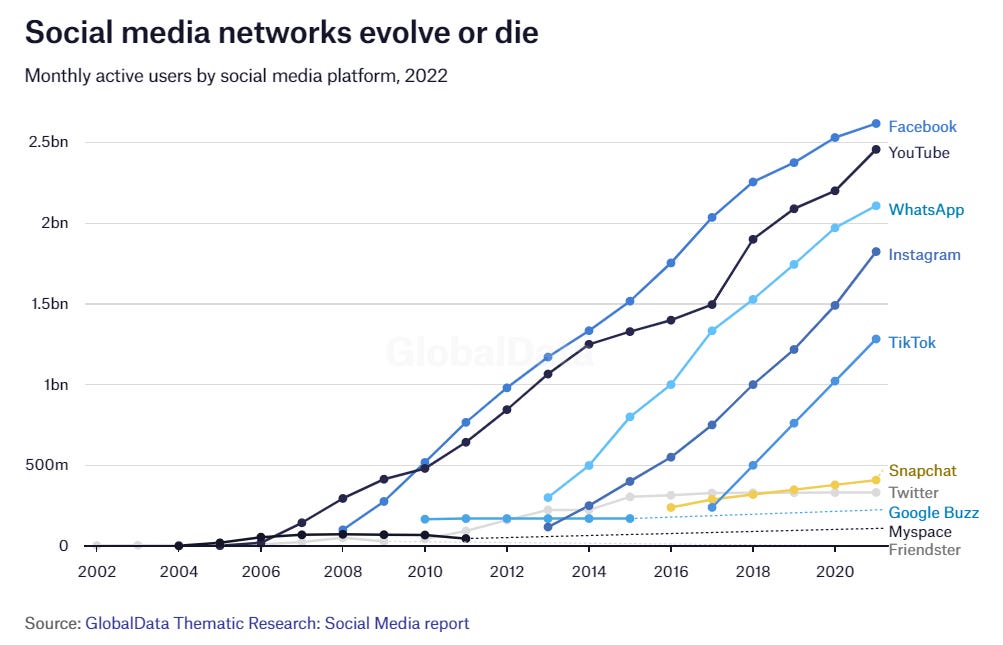Welcome to Notes by Letícia, a biweekly newsletter, where I write about the Venture Capital market. But before we go any further, I would like to welcome all new subscribers from the latest weeks! Here, you can expect a new discussion about the Venture Capital market, from what I’m reading to a deep dive on market data, on a biweekly basis. And if you’re still not subscribed, please, subscribe!

The past teaches us a lot, and it can usually help us see signs of the present moment. One moment where there was a significant change in the relationship between humans and technology was the emergence of social networks, which brought a turning point for dinamics that were previously different. The connection between people began to have another meaning, as did the way of interacting and what attention means when transitioning to the online world in social networks.
This turning point is happening again, in its second iteration, with the interpretation of technologies as companions, assistants, and almost with a mind of their own.
In today's article, I decided to bring the timeline of this first turning point, that is, the years when most of the major social media startups emerged. To do this, I sought out some of the most relevant startups in the sector, focusing on models and experiences based on connecting friends and exchanging instant messages.

The newcomers arrive
The chart above shows the relevance and user growth over time of some of the early social networks. Sixdegrees and AOL Instant Messenger were the first cases that truly gained major attention, founded in the late 1990s. These two startups paved the way for the future leaders of this sector, being founded at a time when there was still no stable internet and widespread adoption of this technology, which is one of the main reasons they had lower adoption rates compared to players like Facebook.
Market leaders are being founded and becoming more evident as time goes by
From 2002 onwards, the space begins to become more interesting, with Friendster, Myspace, Facebook, Orkut, LinkedIn, and Twitter (now X, still getting used to). This increase in competition brought about a scenario of high funding and also high mortality, due to the large number of startups entering the sector. This can be seen especially with the user behavior of Myspace and Friendster, which, faced with the rise of strong competitors, are unable to sustain themselves, leading to a decrease in the number of users.
It is interesting to notice the different theses that began to appear, with Gowalla (a location-based social media network), Vine (short video format social media), Yik Yak, and Secret (both being platforms for sharing ideas and connecting people anonymously), among several others. Many of these ended up in the mortality statistics, but many of their elements are present today in other networks, such as the location feature of Snapchat.

When comparing the first graph with this last one, it's important to notice the difference in scale. The significance that this space gained over time was immense, as evidenced by the difference in the number of people accessing these platforms. This movement didn't solely occur because exceptional startups built good products, but the timing of this happening is of extreme importance. The dot-com startup wave and the expansion of internet access were occurring at this time, highlighting the importance of the "why now" factor.
Stabilization of the Sector
Comparing the peak activity period in a space with the same space a few year later, there are clear leaders, suggesting relative stability. However, stability is never truly achieved, new players emerge constantly, such as Clubhouse, BeReal, Discord, and Threads, each bringing a different form of interaction with the technology. Discord, for instance, initially focused on the gaming world, experiencing significant growth by targeting a specific niche. Only after achieving considerable scale did they broaden their scope, entering different niches. Conversely, platforms like BeReal and Clubhouse, which are still active, experienced greater initial hype but struggled to maintain user retention.
What does it take to become a leader now?
I believe the most notable case of high growth and market share gain is TikTok, owned by ByteDance. Following its rapid growth, major players like Instagram rushed to build features that would rival what users were enjoying on the other app. However, this shift in user behavior didn't happen overnight. The increasingly shorter attention spans, growing competition for where individuals would focus their attention, and the rising anxiety levels among the population had already been driving content towards shorter formats. It only required someone, with significant execution power, to ride this wave and help accelerate it. That's exactly what happened, TikTok became a major catalyst for the growth of content in this style.
Now we are experiencing a similar turning point in how people interact with technology, what it enables, and what it represents in everyone's daily lives. Yesterday, OpenAI unveiled its new model, undoubtedly enabling the existence of an assistant for everyday tasks.
The opportunity that arises is, which solutions will best harness these capabilities and manage to keep the user engaged? For more general problems, ChatGPT can perform well, but when it becomes specialized in a single subject, the responses tend to be better, just like with a human. Excited to see how this space evolves!
Recommendations
⬛ Responsible AI: Why it’s so hard, and why we should care about it - MMC VC
⬛ Mostly Multiples 5/5: The End of an Era - CJ Gustafson
⬛ How novelty effects and Dopamine Culture rule the tech industry - Andrew Chen
⬛ Social Resilience in Online Communities: The Autopsy of Friendster

